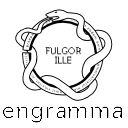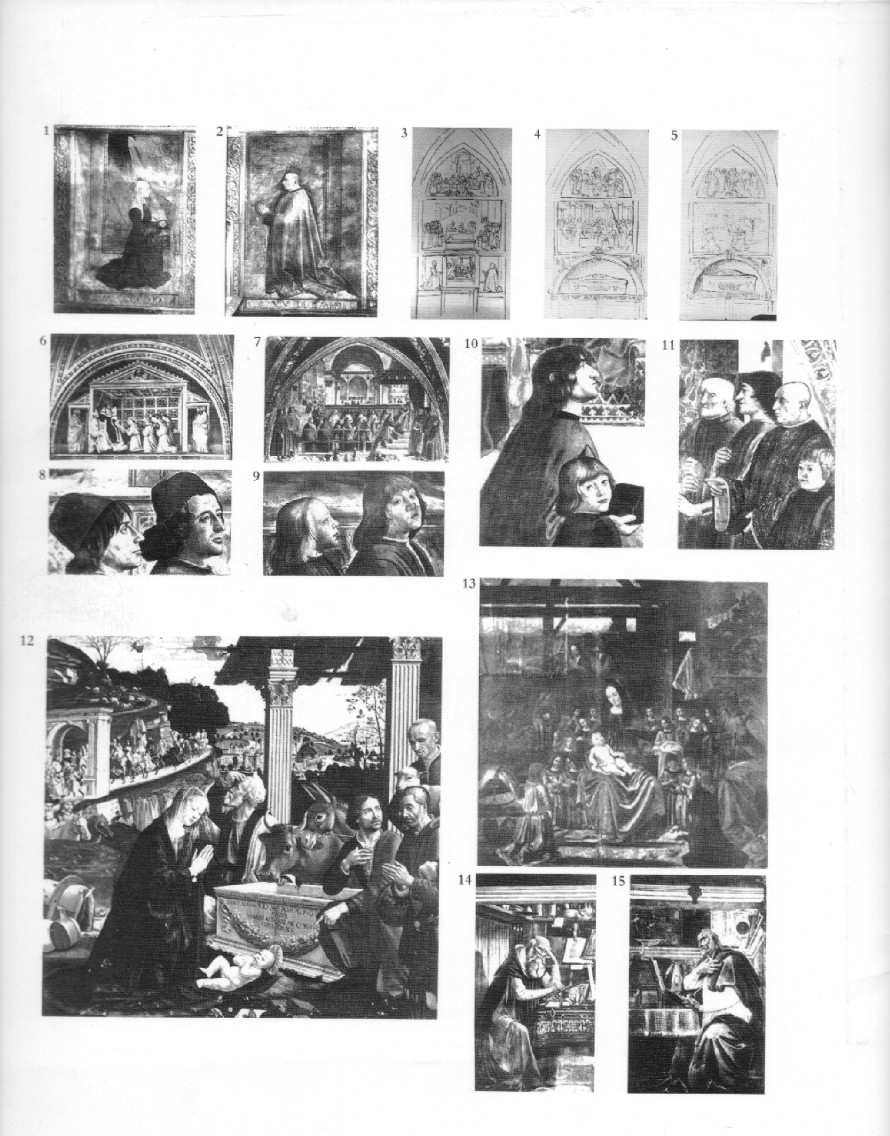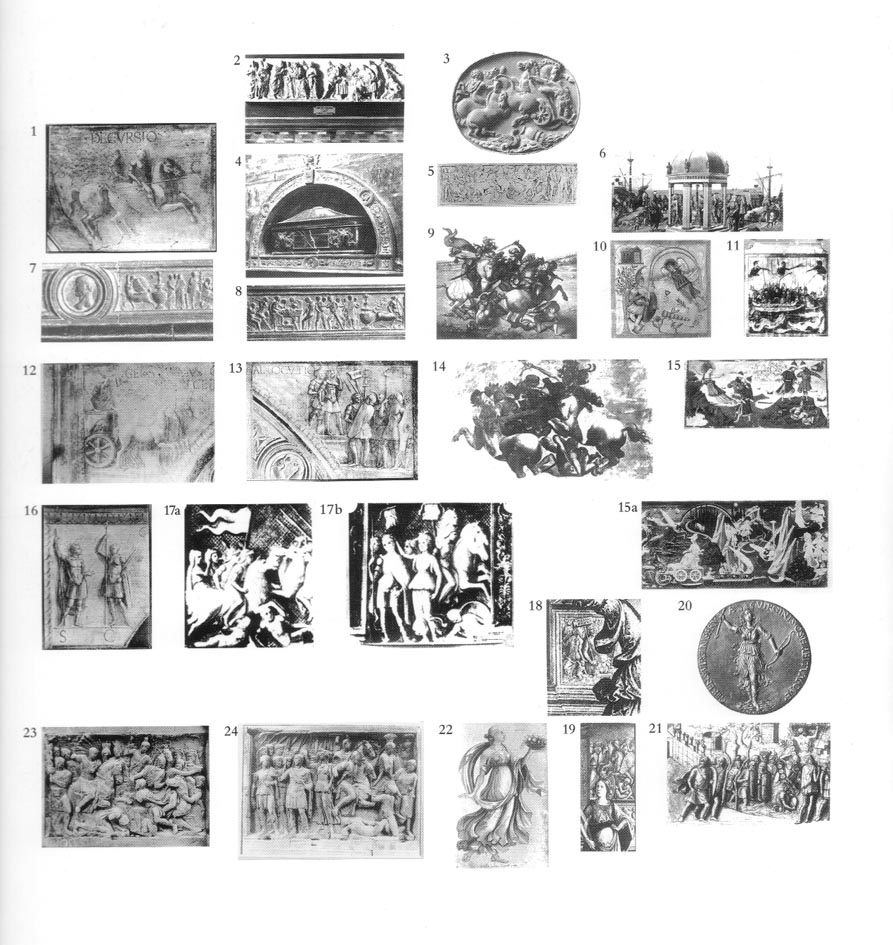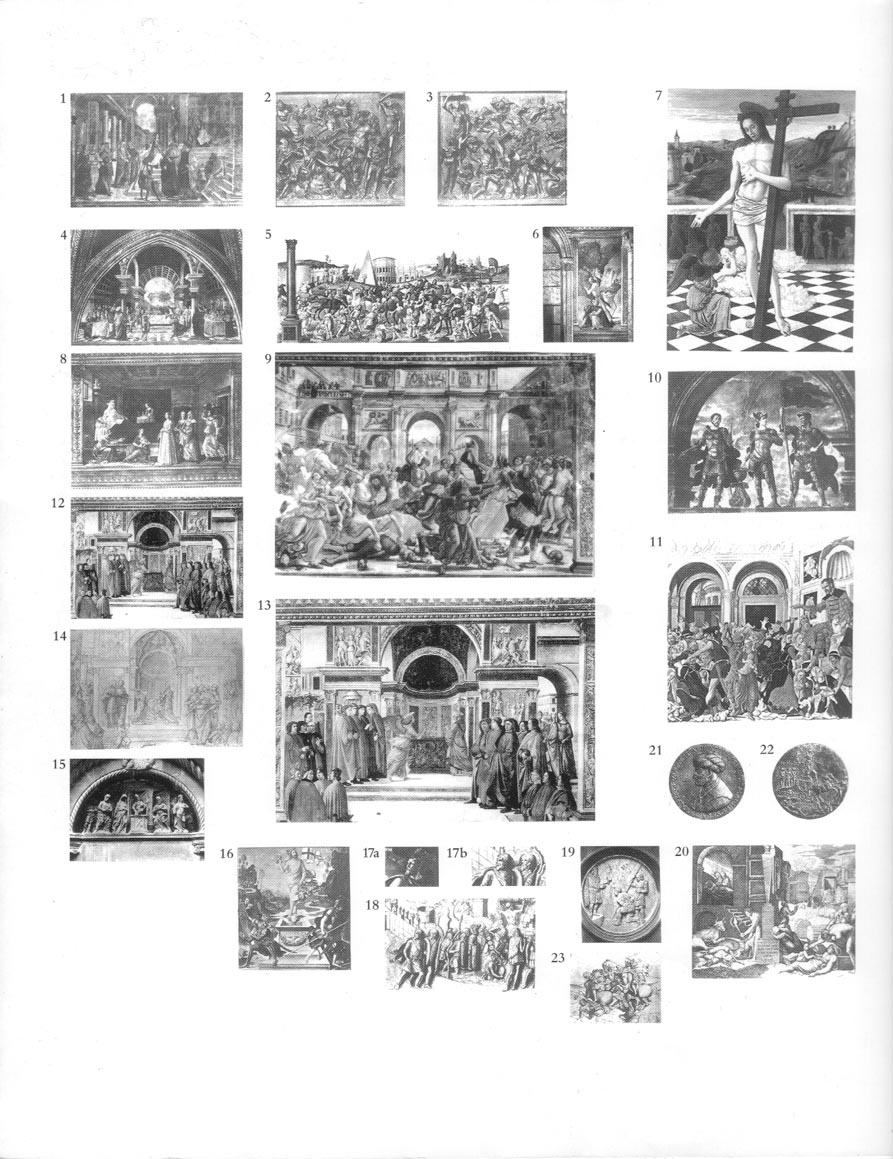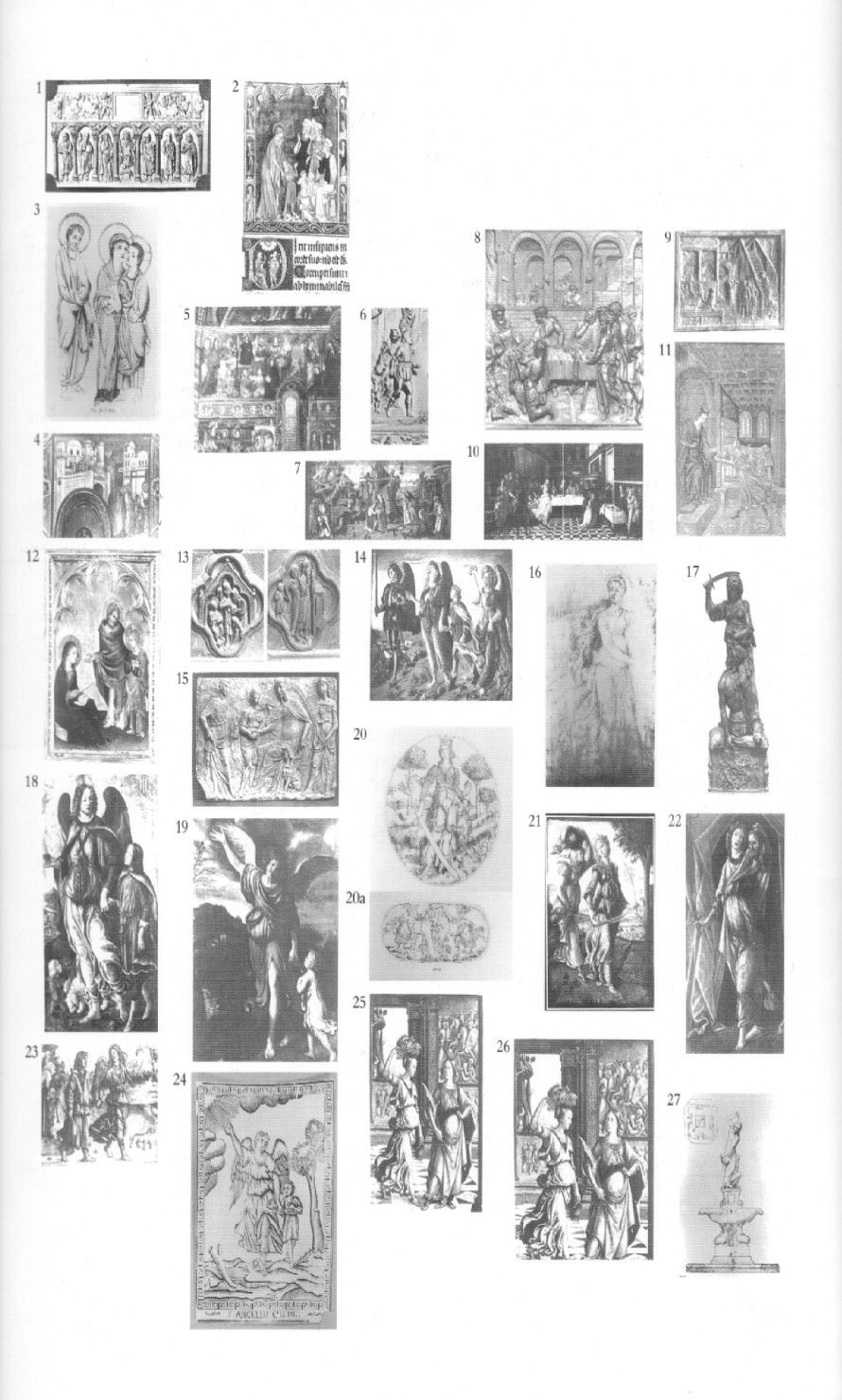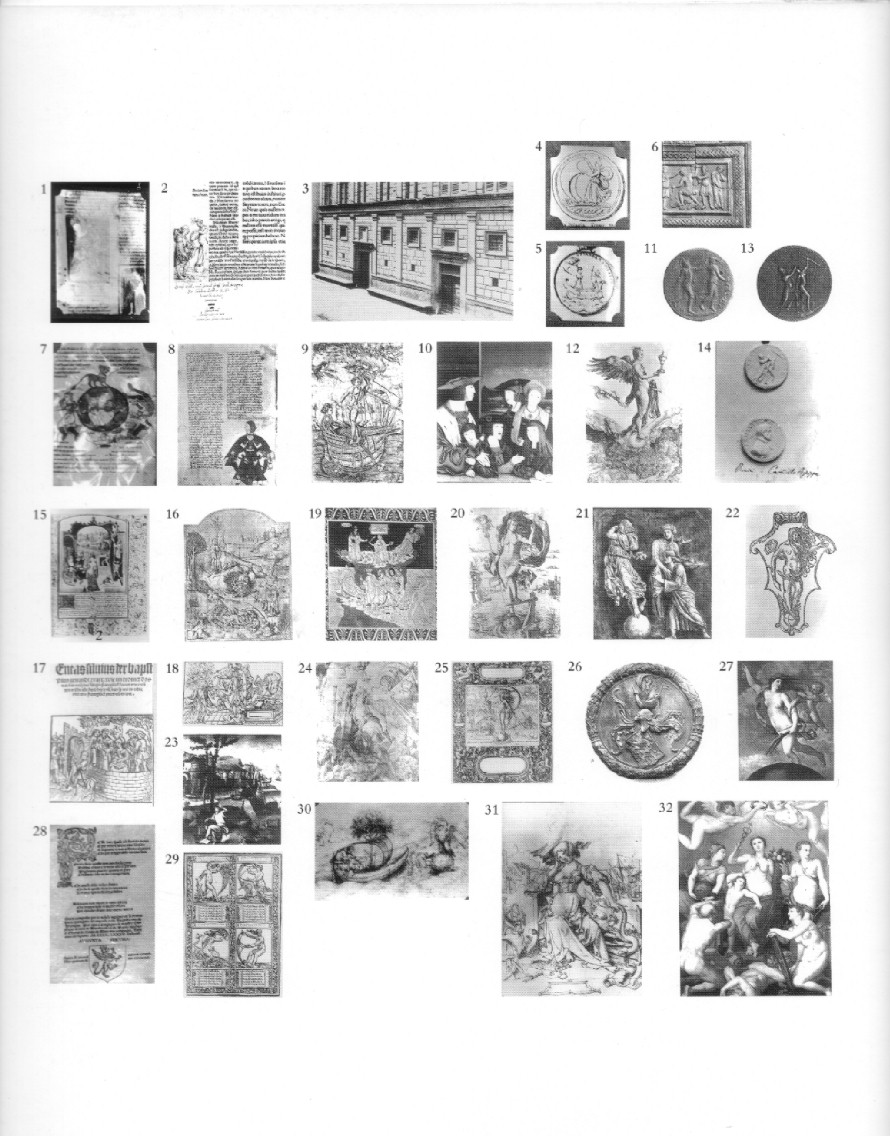PERCORSO VI (Tavole 42, 43, 44, 45, 46, 47, 48)
Reincarnazioni dell’Antico
Figure del compianto, Mercanti e Fortuna, Angeli e Vittoria, Ninfe e Cacciatrici di teste (Firenze, XV secolo)
Il punto culminante del Rinascimento secondo la parabola di riemersione dell’Antico. Nelle opere (fra i nomi degli artisti Donatello, Bellini, Lippi, Peruzzi, Reni, Lippi) si registra l’urgenza espressiva del pathos dionisiaco – letteralmente re-inventato nel primo Rinascimento – nelle sue diverse gradazioni energetiche. Ninfe, angeli, cacciatrici di teste: le Pathosformeln si incarnano nel mundus imaginalis abitato da figure pagane che l’uomo del Rinascimento costruisce per sé (Salomè e Giuditta, Tobia e l’Arcangelo Raffaele, Fortuna e la Ninfa gradiva). L’Antico irrompe anche nell’arte di soggetto religioso e devozionale: figure esemplari di questa espressività patetica sono le ‘madri furiose’ nella scena della Strage degli innocenti e le figure dolorose nelle lamentazioni funebri (la Menade sotto la Croce, le dolenti pagane in contesto cristiano).
PATHWAY VI (Panels 42, 43, 44, 45, 46, 47, 48)
Reincarnations of Antiquity
Mourning figures; Merchants and Fortune; Angels and Victory; Nymphs and Headhunters (Firenze, 15th century)
This section focuses on the apogee of the Renaissance through the lens of the reemergence of Antiquity. The works of artists such as Donatello, Giovanni Bellini, Filippino Lippi, Baldassarre Peruzzi and Guido Reni capture the expressive intensity of the Dionysian pathos – literally reinvented in the early Renaissance – in its various energetic gradations. Nymphs, Angels, Headhunters: the Pathosformeln are embodied in the mundus imaginalis, a realm inhabited by the pagan figures that the Renaissance man constructs for himself (e.g. Salome and Judith; Tobias and the archangel Raphael; Fortuna and the Nympha gradiva). Antiquity also infiltrates the depiction of religious and devotional subjects: exemplary figures of this pathetic expressiveness include the “furious mothers” in scenes of the Massacre of the Innocents and the sorrowful figures of the Lamentations (Maenad under the Cross; pagan mourners recontextualised in a Christian setting).
